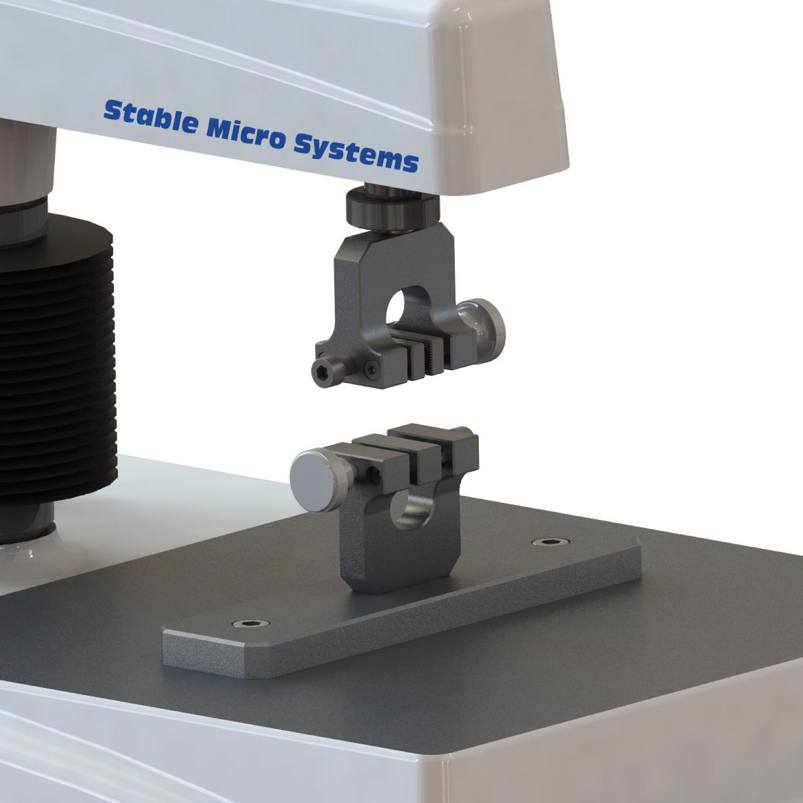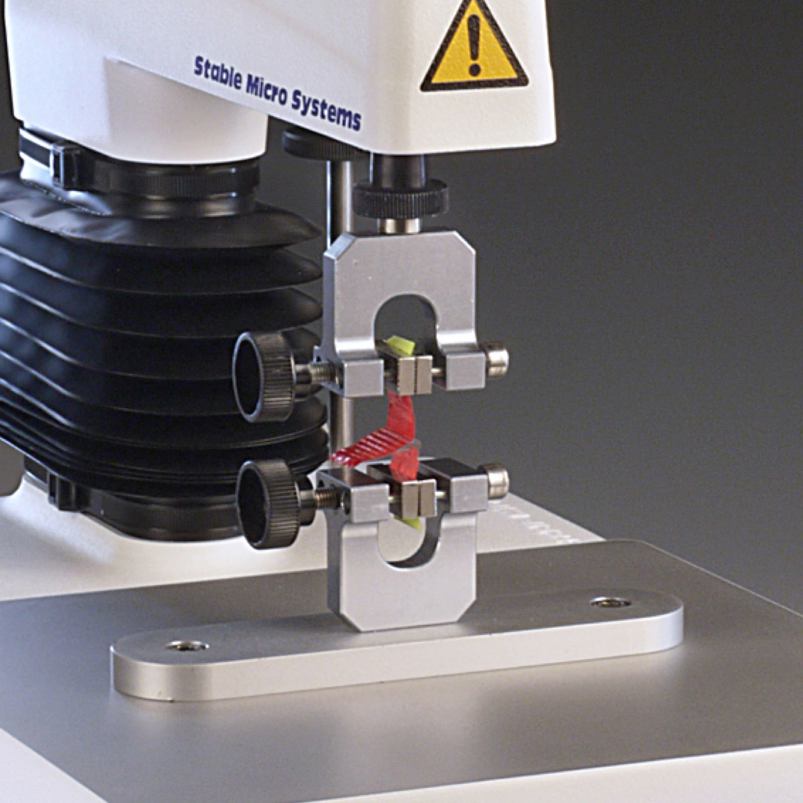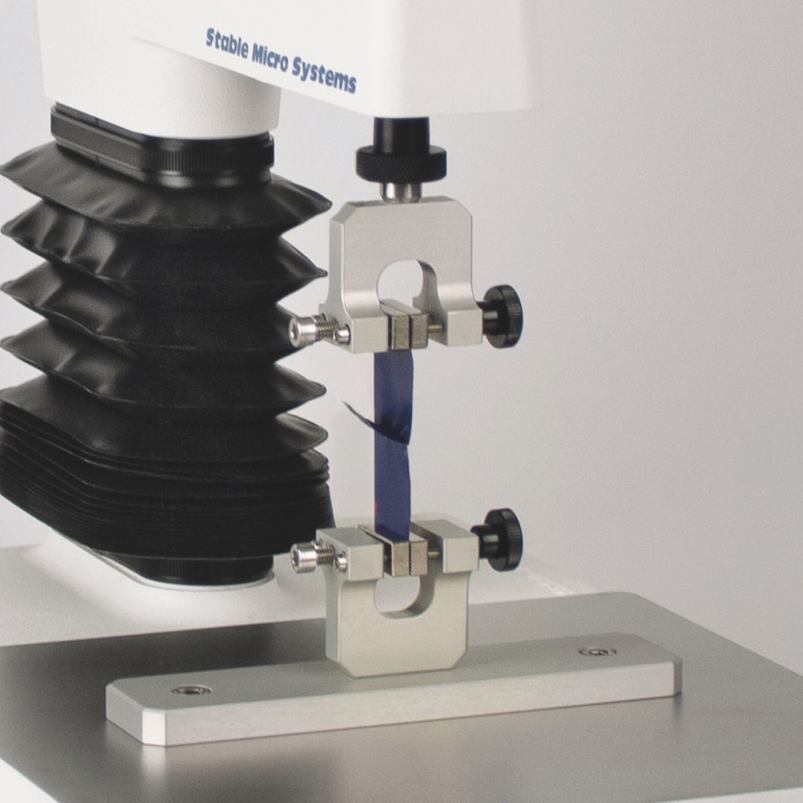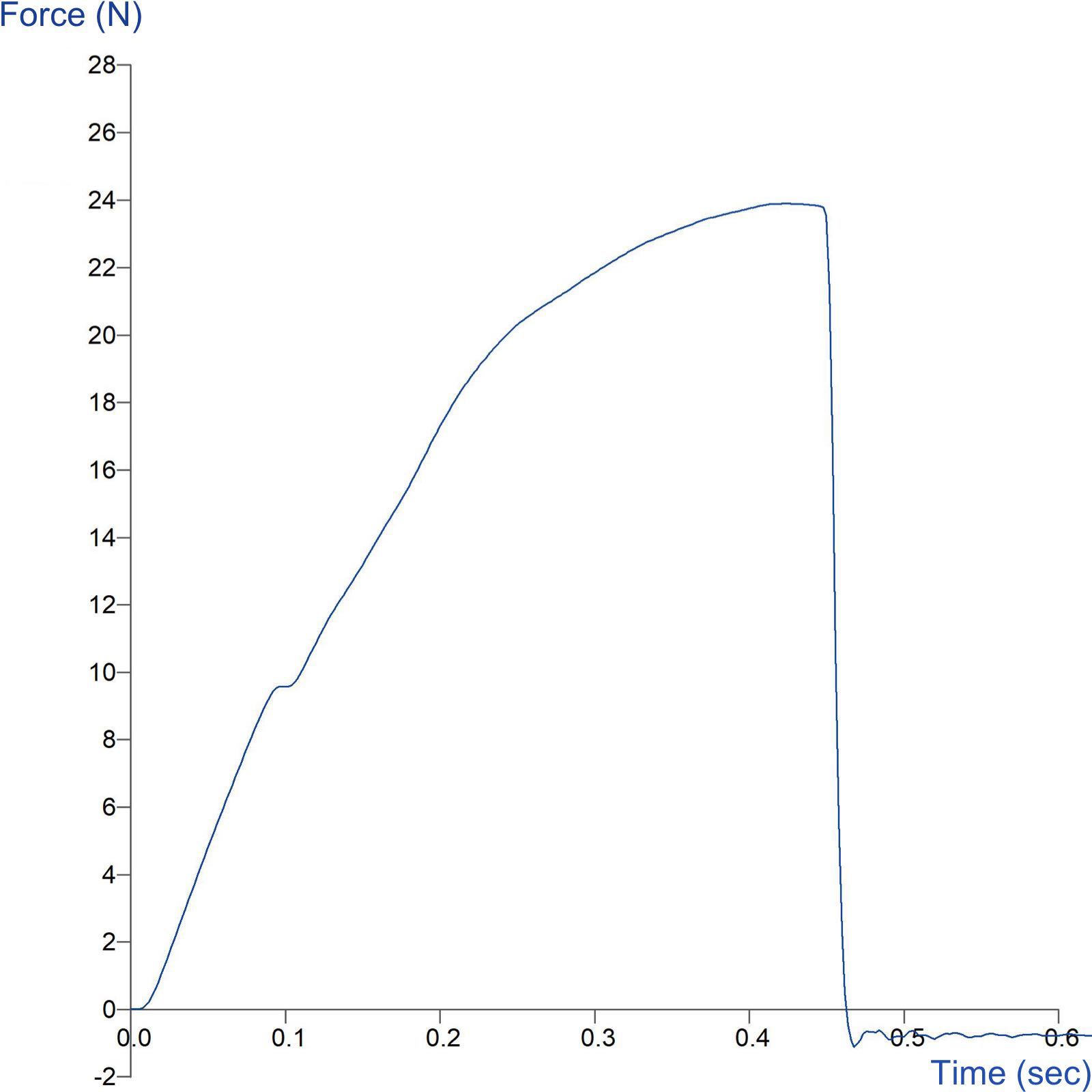Product overview
Tensile Grips allow the support of a sample in order to perform a tensile test and measure such parameters as tensile strength or elongation/extensible properties. Tensile test results are calculated from load-extension curves and expressed as Tensile Strength, Work of Failure, Elastic Modulus and Extension (or Elongation) to Break.
The Miniature Tensile Grips, are attached to the base plate and load cell carrier of the Texture Analyser. Typically the sample is located to leave a region of exposed test material between the upper and lower grip whereby breakage during the tensile test should occur.
With the correct sample geometry and test conditions, the tensile strength of films can be measured according to, for example, ASTM Method D882-91. Methods that are not according to an ASTM Standard are also viable, particularly when sample dimensions cannot be prepared according to the Standard or when the operator may wish to modify parameters such as the test speed. One such example of empirical tensile testing is a traditional method taking a strip of gelatin film (such as that used for capsule manufacture), making a dumbbell-shaped piece for testing, placing the wide ends in the upper and lower grips of a Texture Analyser and measuring the forces to stretch the film to a given distance and/or to rupture the film.
It should be noted that several variations of Tensile Grips are available, depending upon sample size, material strength and grip face requirements. The A/MTG has jaw faces of 25mm x 10mm with a maximum opening of 8mm. These grips are ideal for the identification of the tensile characteristics of samples such as packaging materials, plastic and aluminium film, and have been used in a cycling motion to assess the flexibility of chewing gum sticks and confectionery leathers.
How do the Miniature Tensile Grips work?
Ideal sample form
Samples that can be gripped and held without failure at the grip face.
Benefits and limitations
- Smaller dimensions may provide tensile testing for Express490 instruments with limited testing stroke
- Jaw faces 25 x 10mm
- Maximum opening 8mm
- Up to 50kg
Optional extras
Single top grip - A/MTGS
Technical information
Installation
Full installation instructions are provided within the Education Zone of the latest Exponent/Connect software version and on the technical information sheet accompanying this product.
Chemical compatibility
Stable Micro Systems probes and attachments are commonly made from four materials: anodised aluminium (AA6082 T6), stainless steel (316 T), Delrin (acetyl copolymer) and Perspex (polycarbonate).
In general use, probes and attachments made from these materials will be suitable for testing food products and inert non-food materials.
The four materials listed above are not universally resistant to all types of chemicals and as such the compatibility of the probe/attachment material with the product (to be tested) must be established to prevent damage to the probes and attachments. If the compatibility of the product with the probe is unknown to the customer then the chemical information about the product (Material Safety Data Sheet or Product Data Sheet) should be submitted to Stable Micro Systems. Stable Micro Systems will then assess the suitability of the probe/attachment material for use with the product and advise accordingly. If this advice is not sought then Stable Micro Systems will not accept liability for probes/attachments damaged by chemical attack from the product being tested.
Cleaning and maintenance
All probes and attachments may be cleaned in warm (or hand hot) water using a mild detergent. A soft brush may be used but abrasive cleaning aids should be avoided. Stable Micro Systems products should not be microwaved or cleaned in a dishwasher.
Screw threads should be lightly lubricated after drying using a light lubricant, e.g. petroleum jelly, mineral oil. This will aid the fitting and unscrewing of the item. Each component of a probe or attachment should be wrapped separately when stored, to avoid scratching or chipping. This will safeguard against any unnecessary damage to the accessory.




